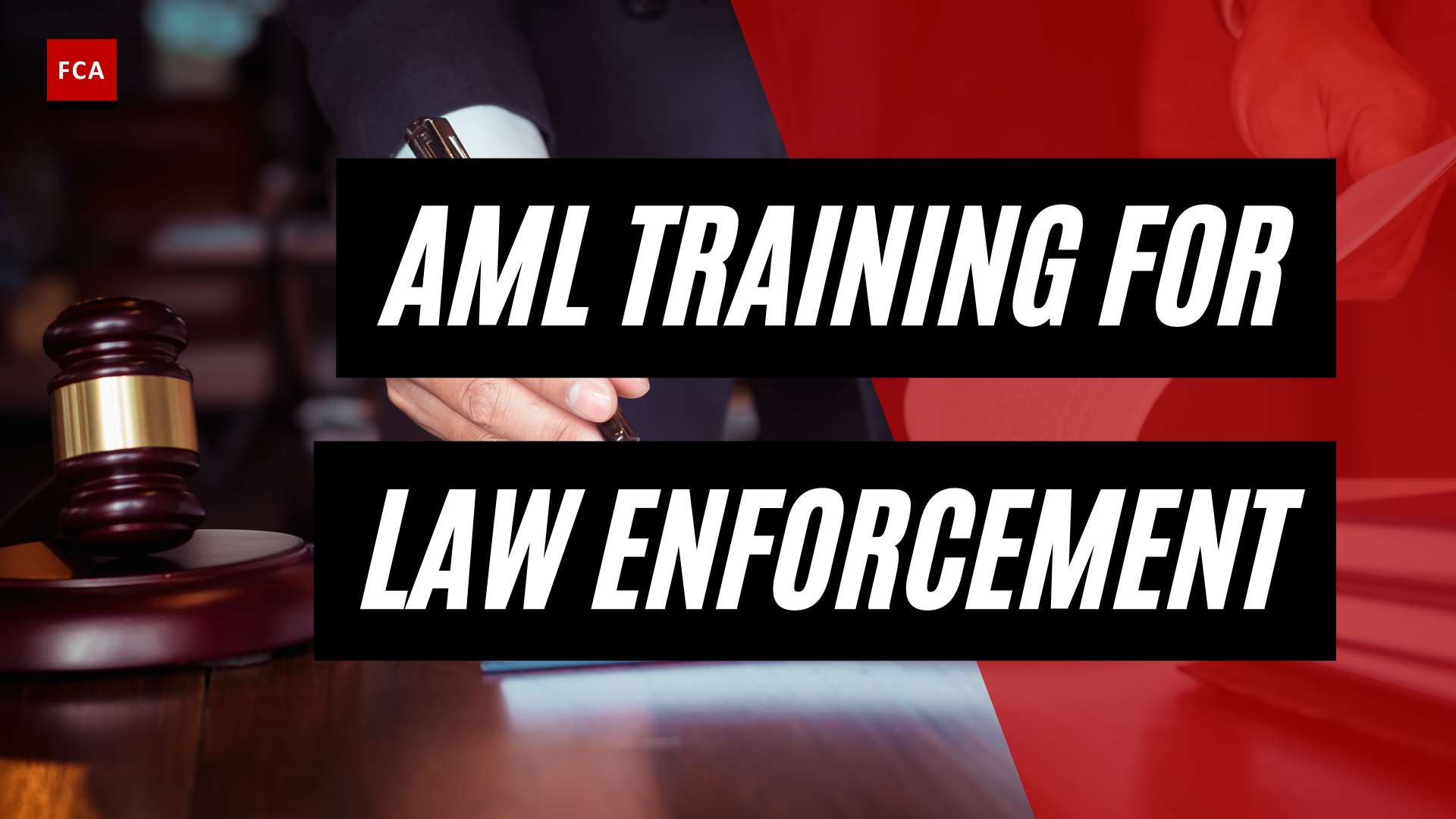AML Compliance for Mortgage Lenders
Ensuring compliance with anti-money laundering (AML) regulations is crucial for mortgage lenders to maintain the integrity of the financial system and prevent illicit activities. Mortgage lenders, as financial institutions, are subject to AML requirements and must establish robust AML compliance programs. Let’s explore an overview of AML compliance and understand its importance for mortgage lenders.
Overview of AML Compliance
AML compliance refers to the set of procedures and measures that financial institutions, including mortgage lenders, must implement to detect and prevent money laundering and terrorist financing activities. The goal of AML compliance is to safeguard the financial system from being used to launder illicit funds and to identify and report suspicious transactions.
Mortgage lenders play a critical role in the real estate sector, making it essential for them to be proactive in combating money laundering in real estate. By adhering to AML regulations, mortgage lenders contribute to the overall integrity of the industry and help maintain public trust.
Importance of AML Compliance for Mortgage Lenders
Compliance with AML regulations is crucial for mortgage lenders due to several reasons. Firstly, mortgage lenders are considered financial institutions under the Bank Secrecy Act (BSA) and must comply with AML requirements. This includes implementing AML programs, filing reports of suspicious activity, and keeping records of certain transactions (Geraçi Law Firm). Non-compliance can result in severe penalties and legal consequences.
Secondly, AML compliance helps mortgage lenders identify and mitigate the risks associated with money laundering and terrorist financing. By implementing effective real estate AML compliance programs, mortgage lenders can detect and prevent suspicious activities, such as the use of illicit funds for real estate transactions.
Additionally, adherence to AML regulations helps mortgage lenders protect their reputation. Being associated with money laundering or other illicit activities can result in significant reputational damage and the loss of trust from customers, investors, and regulators. It is essential for mortgage lenders to maintain a strong reputation as responsible and compliant financial institutions.
To ensure AML compliance, mortgage lenders should establish comprehensive AML programs, conduct thorough AML due diligence on customers, implement transaction monitoring systems, and report suspicious activities when necessary. Furthermore, leveraging technology such as AI and machine learning can enhance the effectiveness of AML compliance efforts.
In summary, AML compliance is a critical requirement for mortgage lenders. By adhering to AML regulations, mortgage lenders contribute to the overall integrity of the financial system, protect their business reputation, and mitigate the risks associated with money laundering and terrorist financing.
Regulatory Framework for AML Compliance in Real Estate
To ensure the integrity of the real estate sector, the implementation of robust Anti-Money Laundering (AML) compliance measures is crucial. Mortgage lenders, as key players in real estate transactions, are subject to specific regulatory frameworks aimed at combating money laundering and terrorist financing.
The Bank Secrecy Act (BSA)
Enacted in 1970, the Bank Secrecy Act (BSA) requires financial institutions, including mortgage lenders, to establish AML programs. These programs are designed to detect and prevent money laundering activities within the financial system. The BSA mandates that mortgage lenders implement a range of measures, such as customer identification procedures, reporting suspicious activities, and maintaining records of certain transactions (Geraçi Law Firm).
The BSA provides the foundation for AML compliance in the mortgage lending industry. It requires mortgage lenders to establish comprehensive AML programs that are commensurate with the size and complexity of their operations. These programs are designed to deter money laundering and ensure compliance with regulatory requirements.
USA PATRIOT Act and its Impact on AML Compliance
The USA PATRIOT Act, passed in 2001, significantly expanded AML compliance obligations for financial institutions, including mortgage lenders. This legislation was introduced in response to the heightened need for combating terrorism and money laundering activities. The USA PATRIOT Act mandates that financial institutions, including mortgage lenders, develop and implement robust AML programs.
Under the USA PATRIOT Act, mortgage lenders are required to establish customer identification programs (CIPs) to verify the identity of individuals seeking mortgage loans. These programs aim to prevent the use of false identities for illicit purposes. Additionally, the USA PATRIOT Act necessitates enhanced due diligence procedures for high-risk customers, such as politically exposed persons (PEPs) and individuals associated with foreign jurisdictions of concern (Geraçi Law Firm).
The impact of the USA PATRIOT Act on AML compliance within the mortgage lending industry cannot be understated. It has enhanced the regulatory framework by placing additional obligations on mortgage lenders to establish risk-based AML compliance programs. These programs are designed to detect, prevent, and report suspicious activities, ensuring compliance with regulatory requirements.
By adhering to the Bank Secrecy Act (BSA) and the USA PATRIOT Act, mortgage lenders can contribute to the overall efforts in combating money laundering and terrorist financing. These regulatory frameworks provide the necessary guidelines and requirements for an effective AML compliance program within the real estate sector.
AML Compliance Requirements for Mortgage Lenders
To combat money laundering and terrorist financing, mortgage lenders are required to adhere to anti-money laundering (AML) laws and regulations. These regulations necessitate the implementation of specific AML compliance requirements. Key requirements for mortgage lenders include Know Your Customer (KYC) procedures, Customer Due Diligence (CDD) requirements, and beneficial ownership identification.
Know Your Customer (KYC) Procedures
KYC procedures are an integral part of an effective AML program for mortgage lenders. These procedures involve verifying the identity of customers and understanding the nature and purpose of their relationships. By conducting thorough KYC checks, mortgage lenders can ensure that they are not unwittingly facilitating money laundering or illicit activities.
KYC procedures typically involve collecting and verifying customer information, such as:
- Full legal name
- Date of birth
- Residential address
- Government-issued identification documents (e.g., passport or driver’s license)
By obtaining this information, mortgage lenders can assess the risk associated with a customer and detect any potential red flags that may indicate illicit activity. It is essential for mortgage lenders to maintain accurate and up-to-date customer records to support ongoing AML compliance efforts.
Customer Due Diligence (CDD) Requirements
Customer Due Diligence (CDD) is a critical component of an effective AML program for mortgage lenders. CDD involves a risk-based approach to assessing the potential money laundering risks associated with each customer. Effective CDD measures help mortgage lenders better understand their customers, their financial activities, and the potential risks they pose.
As part of the CDD process, mortgage lenders must:
- Verify the customer’s identity using reliable and independent sources.
- Understand the nature and purpose of the customer’s relationship with the lender.
- Conduct ongoing monitoring to detect and report any suspicious activities.
By implementing robust CDD procedures, mortgage lenders can identify and mitigate potential risks associated with money laundering and illicit financial activities.
Beneficial Ownership Identification
During the CDD process, mortgage lenders must also identify and verify the beneficial owners of legal entity customers. Beneficial ownership refers to individuals who directly or indirectly own 25% or more of a legal entity customer. By identifying beneficial owners, mortgage lenders can prevent anonymous individuals from using their services to facilitate money laundering.
The process of beneficial ownership identification involves:
- Collecting and verifying information about the beneficial owners, including their names, addresses, and ownership percentages.
- Verifying the accuracy of the provided information through reliable and independent sources.
- Maintaining records of beneficial ownership information for each legal entity customer.
By identifying and verifying beneficial owners, mortgage lenders can enhance their ability to identify and report suspicious activities and mitigate the risk of money laundering.
It is crucial for mortgage lenders to establish comprehensive AML compliance programs that encompass these requirements. These programs should include robust KYC procedures, thorough CDD processes, and effective measures for identifying beneficial owners. By adhering to these AML compliance requirements, mortgage lenders can contribute to the overall efforts to combat money laundering and protect the integrity of the mortgage industry.
AML Compliance Program for Mortgage Lenders
To ensure robust anti-money laundering (AML) measures in the mortgage industry, lenders must establish a comprehensive AML compliance program. This program encompasses various elements aimed at detecting and preventing money laundering activities. The key components of an AML compliance program for mortgage lenders include establishing the program itself, transaction monitoring and suspicious activity reporting, and internal controls and independent testing.
Establishing an AML Program
Mortgage lenders are required to establish an AML program that outlines policies, procedures, and internal controls to detect and prevent money laundering activities within their operations. This program should be designed to comply with regulatory requirements and mitigate the risk of money laundering in the mortgage lending process.
The AML program should include:
- Written policies and procedures that outline the lender’s commitment to AML compliance and provide guidance for employees.
- Designation of a compliance officer responsible for overseeing the implementation and effectiveness of the AML program.
- Ongoing employee training to ensure awareness of AML regulations, red flags, and reporting obligations.
- Regular risk assessments to identify and mitigate potential vulnerabilities to money laundering risks within the mortgage lending operations.
- Periodic independent testing and review of the AML program’s adequacy and effectiveness.
Transaction Monitoring and Suspicious Activity Reporting
Transaction monitoring is a critical component of an effective AML compliance program for mortgage lenders. It involves the ongoing review and analysis of customer transactions to identify and report any suspicious activities that may indicate money laundering or other illicit financial activities.
Mortgage lenders must implement transaction monitoring systems that can accurately detect and flag suspicious patterns, such as inconsistent income sources, unusual cash transactions, or large transfers from high-risk jurisdictions. When suspicious activities are identified, lenders should promptly report them to the appropriate authorities and follow the required reporting procedures.
Internal Controls and Independent Testing
Internal controls and independent testing are essential components of an effective AML compliance program for mortgage lenders. These measures help identify and address any weaknesses in the program, enhancing the lender’s ability to combat money laundering and illicit financial activities.
Internal controls involve implementing policies, procedures, and monitoring mechanisms to ensure compliance with AML regulations. These controls should include measures such as customer due diligence (CDD), ongoing monitoring of customer relationships, and risk-based approaches to identify and manage potential money laundering risks.
Independent testing evaluates the overall adequacy and effectiveness of the AML compliance program. It involves conducting periodic reviews and assessments to identify any deficiencies or gaps in the program’s implementation. The testing should be performed by qualified individuals or independent auditors who can provide an objective evaluation of the program’s effectiveness.
By establishing an AML program, implementing transaction monitoring systems, and incorporating internal controls and independent testing, mortgage lenders can strengthen their AML compliance efforts. These measures help detect and prevent money laundering activities, safeguard the integrity of the mortgage industry, and contribute to the overall security of the financial system.
Consequences of Non-Compliance with AML Regulations
Ensuring compliance with Anti-Money Laundering (AML) regulations is of utmost importance for mortgage lenders. Failure to comply with these regulations can lead to severe consequences, including civil and criminal penalties, reputational damage, and license revocation.
Civil and Criminal Penalties
Non-compliance with AML regulations can result in significant civil and criminal penalties for mortgage lenders. Regulatory authorities have the power to impose fines and monetary penalties on lenders who fail to meet their obligations. For instance, in Canada, the Financial Transactions and Reports Analysis Centre of Canada (FINTRAC) has the authority to issue Administrative Monetary Penalties (AMPs) to reporting entities that are non-compliant with the Proceeds of Crime (Money Laundering) and Terrorist Financing Act. These penalties can be publicly disclosed, which can have a detrimental impact on the reputation of the lender (FINTRAC).
It is crucial for mortgage lenders to establish and implement robust AML programs to mitigate the risk of non-compliance. This includes implementing effective customer due diligence procedures, transaction monitoring, and suspicious activity reporting. By adhering to these measures, lenders can minimize the likelihood of facing civil and criminal penalties.
Reputational Damage and License Revocation
Non-compliance with AML regulations can result in significant reputational damage for mortgage lenders. News of non-compliance and associated penalties can spread quickly, eroding the trust and confidence of clients, business partners, and the public. Reputational damage can have long-lasting effects and impact the lender’s ability to attract new clients and maintain existing relationships. It can also lead to a loss of business opportunities and partnerships.
In addition to reputational damage, non-compliance with AML regulations can also lead to license revocation. Regulatory authorities have the power to suspend or revoke the licenses of mortgage lenders who consistently fail to meet their AML obligations. License revocation can have dire consequences for a lender, as it effectively prevents them from conducting business in the mortgage industry.
To avoid these negative repercussions, mortgage lenders must establish robust AML programs and diligently adhere to regulatory requirements. Implementing effective internal controls, conducting regular independent testing, and staying updated on regulatory changes are essential steps to ensure compliance and safeguard the lender’s reputation and license.
By understanding the potential consequences of non-compliance with AML regulations, mortgage lenders can prioritize the implementation of comprehensive AML programs. Compliance with AML regulations not only mitigates the risk of penalties but also helps maintain the lender’s reputation, integrity, and continued ability to operate in the mortgage industry.
Leveraging Technology for AML Compliance
In the digital age, technology plays a crucial role in enhancing AML compliance processes for mortgage lenders. Advancements in artificial intelligence (AI) and machine learning have paved the way for more efficient and effective methods of detecting and preventing money laundering and other illicit activities. Two key areas where technology is making a significant impact are the role of AI and machine learning, as well as the emergence of fintech solutions designed specifically for AML compliance.
Role of AI and Machine Learning
AI and machine learning technologies have revolutionized the way mortgage lenders approach AML compliance. These advanced technologies enable lenders to analyze vast amounts of data, identify patterns, and detect suspicious activities more effectively. By leveraging AI and machine learning algorithms, mortgage lenders can enhance their ability to identify potential money laundering risks and comply with regulatory requirements.
One application of AI and machine learning in AML compliance is identity verification. Platforms like Jumio utilize AI-driven services to verify the identities of new and existing users, assess risk, and assist mortgage lenders in meeting compliance mandates (Jumio). These technologies can analyze various data points, such as government-issued IDs and biometric data, to ensure the accuracy and legitimacy of customer identities.
Additionally, AI and machine learning can improve transaction monitoring capabilities. These technologies can analyze transactional data in real-time, flagging suspicious activities and potentially fraudulent transactions. By automating this process, mortgage lenders can streamline their AML compliance efforts, reduce false positives, and focus their resources on investigating genuine risks.
Fintech Solutions for AML Compliance
Fintech companies are at the forefront of developing innovative solutions to enhance AML compliance for mortgage lenders. These solutions leverage advanced technologies like AI and machine learning to streamline operations and improve detection capabilities. By integrating fintech solutions into their existing systems, mortgage lenders can enhance their AML compliance programs and stay ahead of evolving regulatory requirements.
Fintech solutions can encompass a range of functionalities, including identity verification, risk assessment, and transaction monitoring. These technologies enable mortgage lenders to verify customer identities, assess the risk associated with specific transactions, and identify potential red flags more efficiently.
By automating these processes, fintech solutions help mortgage lenders save time and resources while maintaining a robust AML compliance framework. These solutions can also provide real-time alerts and risk assessments, allowing lenders to respond promptly to potential risks and meet their reporting obligations.
It’s important for mortgage lenders to carefully evaluate and select fintech solutions that align with their specific AML compliance needs. Partnering with established fintech providers who have expertise in AML compliance can ensure the successful implementation and integration of these technologies into existing systems.
Leveraging technology, such as AI and machine learning, and adopting fintech solutions can empower mortgage lenders to enhance their AML compliance efforts. These advancements enable lenders to improve the accuracy and efficiency of identity verification, transaction monitoring, and risk assessment processes. By staying ahead of regulatory requirements and leveraging technology, mortgage lenders can effectively combat money laundering and protect the integrity of the mortgage industry.
Best Practices for AML Compliance in Mortgage Lending
Ensuring robust anti-money laundering (AML) compliance is vital for mortgage lenders operating in the real estate industry. To effectively mitigate the risk of money laundering and protect their operations, mortgage lenders should implement best practices. Two key areas to focus on are cybersecurity measures and conducting regular AML audits and reviews.
Cybersecurity Measures
In today’s interconnected world, cybersecurity measures play a crucial role in protecting mortgage lenders from various threats, including potential money laundering activities. Implementing strong cybersecurity protocols helps safeguard sensitive data, maintain the integrity of operations, and prevent unauthorized access to financial information.
Key cybersecurity measures that mortgage lenders should consider include:
- Secure Network Infrastructure: Establishing a secure network infrastructure with firewalls, intrusion detection systems, and encryption technologies helps protect against external threats and unauthorized access to sensitive data.
- Employee Training: Providing comprehensive training to employees on cybersecurity awareness and best practices can help prevent data breaches and phishing attempts.
- Data Encryption: Utilizing robust encryption techniques for sensitive data, both in transit and at rest, adds an extra layer of protection against unauthorized access.
- Multi-Factor Authentication: Implementing multi-factor authentication protocols for access to critical systems and databases adds an additional level of security by requiring multiple forms of verification.
- Regular Security Assessments: Conducting regular security assessments and vulnerability testing helps identify potential weaknesses in the cybersecurity infrastructure and allows for timely remediation.
By implementing these cybersecurity measures, mortgage lenders can enhance their ability to detect and prevent potential money laundering risks while maintaining the trust of their customers and regulatory compliance.
AML Audits and Reviews
Regular AML audits and reviews are essential components of an effective AML compliance program for mortgage lenders. These processes help ensure adherence to regulatory requirements, identify vulnerabilities, and address any weaknesses in the AML program. Conducting thorough audits and reviews enhances the lender’s ability to combat money laundering and illicit financial activities effectively.
Key aspects of AML audits and reviews for mortgage lenders include:
- Internal Controls: Establishing robust internal controls is vital to ensure the effectiveness of AML policies and procedures. These controls help monitor compliance, detect potential red flags, and facilitate timely reporting of suspicious activities.
- Independent Testing: Conducting independent testing evaluates the overall adequacy and effectiveness of the AML compliance program. Independent testing should be performed by qualified individuals or third-party firms to provide an objective assessment of the lender’s AML practices.
- Risk Assessments: Regularly assessing money laundering risks specific to the mortgage lending industry helps identify areas of vulnerability and enables the development of targeted risk mitigation strategies.
- Policy and Procedure Evaluation: Reviewing and updating AML policies and procedures in line with regulatory changes and industry best practices ensures that the lender’s AML program remains effective and compliant.
By conducting regular AML audits and reviews, mortgage lenders can proactively identify and address any weaknesses or deficiencies in their AML compliance program. This not only helps mitigate the risk of penalties, reputational damage, and license revocation but also demonstrates a commitment to maintaining a robust AML framework.
In conclusion, mortgage lenders should prioritize cybersecurity measures to protect against potential money laundering threats and conduct regular AML audits and reviews to ensure the effectiveness of their AML compliance program. By adhering to these best practices, lenders can stay compliant with regulatory requirements, mitigate risks, and maintain the integrity of their operations in the mortgage lending industry.
AML Compliance Requirements for Mortgage Lenders
To ensure the integrity of the mortgage industry and combat money laundering and terrorist financing, mortgage lenders are required to adhere to anti-money laundering (AML) laws and regulations. These regulations establish specific AML compliance requirements that mortgage lenders must follow. In this section, we will explore the key AML compliance requirements for mortgage lenders, including Know Your Customer (KYC) procedures, Customer Due Diligence (CDD) requirements, and beneficial ownership identification.
Know Your Customer (KYC) Procedures
KYC procedures are an essential component of an effective AML program for mortgage lenders. These procedures require mortgage lenders to establish processes for identifying and verifying the identity of their customers. By knowing the identity of their customers, mortgage lenders can assess the risk associated with each customer and ensure compliance with AML regulations.
The KYC process involves obtaining specific information from customers, such as their name, address, date of birth, and identification documents. Mortgage lenders must verify this information through reliable and independent sources, such as government-issued identification documents and credit reports. By conducting thorough KYC procedures, mortgage lenders can mitigate the risk of money laundering and illicit activities within their operations.
Customer Due Diligence (CDD) Requirements
Customer Due Diligence (CDD) is another crucial requirement for AML compliance in mortgage lending. CDD involves understanding the nature and purpose of customer relationships, conducting ongoing monitoring, and identifying and reporting suspicious activities when necessary. Effective CDD helps mortgage lenders mitigate the risks associated with money laundering and illicit activities.
During the CDD process, mortgage lenders must assess the risk associated with each customer, taking into account factors such as the customer’s location, business activities, and transaction history. The goal is to identify and verify the information provided by customers, ensuring that it is accurate and reliable. By conducting CDD, mortgage lenders can better understand their customers and detect any potential red flags that may indicate money laundering or other illicit activities.
Beneficial Ownership Identification
Identifying and verifying the beneficial owners of legal entity customers is an important aspect of AML compliance for mortgage lenders. Beneficial ownership refers to individuals who directly or indirectly own 25% or more of a legal entity customer. By identifying and verifying beneficial ownership, mortgage lenders can prevent anonymous individuals from using their services to facilitate money laundering.
To comply with beneficial ownership identification requirements, mortgage lenders must collect information about the individuals who meet the beneficial ownership criteria. This information includes the individuals’ names, addresses, dates of birth, and identification documents. By obtaining this information, mortgage lenders can ensure transparency and accountability within their customer relationships.
Adhering to these AML compliance requirements is crucial for mortgage lenders to maintain the integrity of the mortgage industry and prevent money laundering and terrorist financing. By implementing robust KYC procedures, conducting thorough CDD, and identifying beneficial owners, mortgage lenders can contribute to a safer and more secure financial system.








